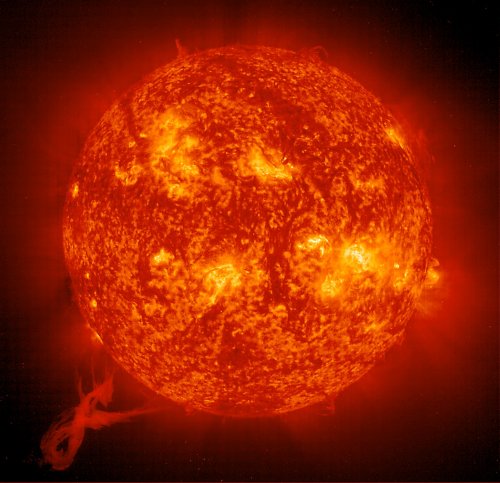In the quest to unravel the intricacies of the universe, researchers have often turned to particle physics, cosmology, and astrophysics, seeking elusive answers to profound mysteries. Among the many enigmatic particles theorized, axions stand out due to their potential to illuminate both solar phenomena and address longstanding puzzles within the realm of primordial nucleosynthesis. This exploration into axions promises not only to redefine our comprehension of solar dynamics but also to reshape our understanding of fundamental aspects of astrophysics.
At the heart of the axion hypothesis lies the Peccei-Quinn theory, proposed in the late 1970s to resolve the strong CP (Charge Parity) problem in quantum chromodynamics. The existence of axions has profound implications since they are predicted to be extremely light, electrically neutral, and incredibly weakly interacting with ordinary matter. Consequently, if these particles exist, they could serve as candidates for cold dark matter—a component that collectively influences the large-scale structure of the universe, exerting gravitational effects without emitting electromagnetic radiation.
One of the most tantalizing applications of axion physics is in the realm of solar studies. The sun, primarily composed of hydrogen and helium, is a colossal nuclear fusion reactor that has sparked the interest of scientists for decades. It is an arena where physics operates under extreme conditions, and its interior processes remain vexingly obscure, primarily due to the opacity of plasma. The helioseismic data suggest discrepancies between predicted and observed solar neutrino counts. These discrepancies present an opportunity for new physics, potentially including axions as active players in solar dynamics.
Axions may help unravel the mystery surrounding solar neutrinos—a puzzling outcome that emerged from observations that detected only one-third of the expected neutrino flux from the sun. This anomaly could imply that some solar neutrinos are transforming into axions during their journey to Earth, thus becoming undetectable by conventional neutrino detectors. If true, the investigation of axions might unveil a previously unexplored dimension of stellar processes, enhancing our understanding of solar energy production.
Furthermore, considering the relationship between axions and stellar evolution reveals another layer of intrigue. The axion’s ability to interact with photons has led to the hypothesis that axion-photon conversion could play a significant role in the mechanisms of energy transport within stars. This interaction might account for discrepancies in the observed energy output versus theoretical models. Experimental endeavors to search for these elusive particles in solar contexts could potentially bridge the gap between theory and observation, giving a fresh perspective on the physical processes occurring within our sun.
Beyond solar astrophysics, axions also beckon attention in the context of primordial nucleosynthesis, particularly surrounding the synthesis of lithium—an element that exhibits a fascinating cosmic history. Models of the Big Bang nucleosynthesis (BBN) predict the formation of lithium and other light elements; however, observations reveal a significant deficiency that cannot be reconciled with existing models. The challenge, often referred to as the “lithium problem,” highlights an inconsistency between predicted and observed lithium abundances in old star populations.
Recent theories propose that axions may contribute to the lithium puzzle by influencing the rates of nuclear reactions during the BBN era. If axions exist, they could affect the interactions among nucleons and photons in the hot, dense environment of the early universe, potentially resulting in altered reaction rates for lithium production. This modification might offer a pathway to resolving the lithium discrepancy, embedding axions firmly within the narrative of elemental origin and evolution.
The ongoing research efforts aimed at detecting axions extend beyond theoretical models and enter the experimental domain. Numerous projects are underway, utilizing cutting-edge technology to search for axions emanating from solar origins or produced in particle accelerators. One such initiative includes the Axion Dark Matter Experiment (ADMX), which employs highly sensitive microwave cavities designed to capture the minuscule energy signatures associated with axion conversion into photons. As these experimental endeavors gain momentum, the potential to test theories surrounding axions also expands, ushering in a new era in particle physics and astrophysics.
In conclusion, axions present a compelling framework through which to rethink and investigate longstanding dilemmas in solar physics and primordial nucleosynthesis. The implications of discovering axions would cascade across various disciplines, reshaping our understanding of both the cosmos and the fundamental constituents of matter. As the frontiers of research converge upon these elusive particles, one cannot overlook the profound promise they hold—a beacon of hope in addressing some of the most pressing mysteries of our universe. By piquing curiosity and shifting perspectives, axions may very well become the golden keys unlocking the intricate vaults of cosmic understanding.












